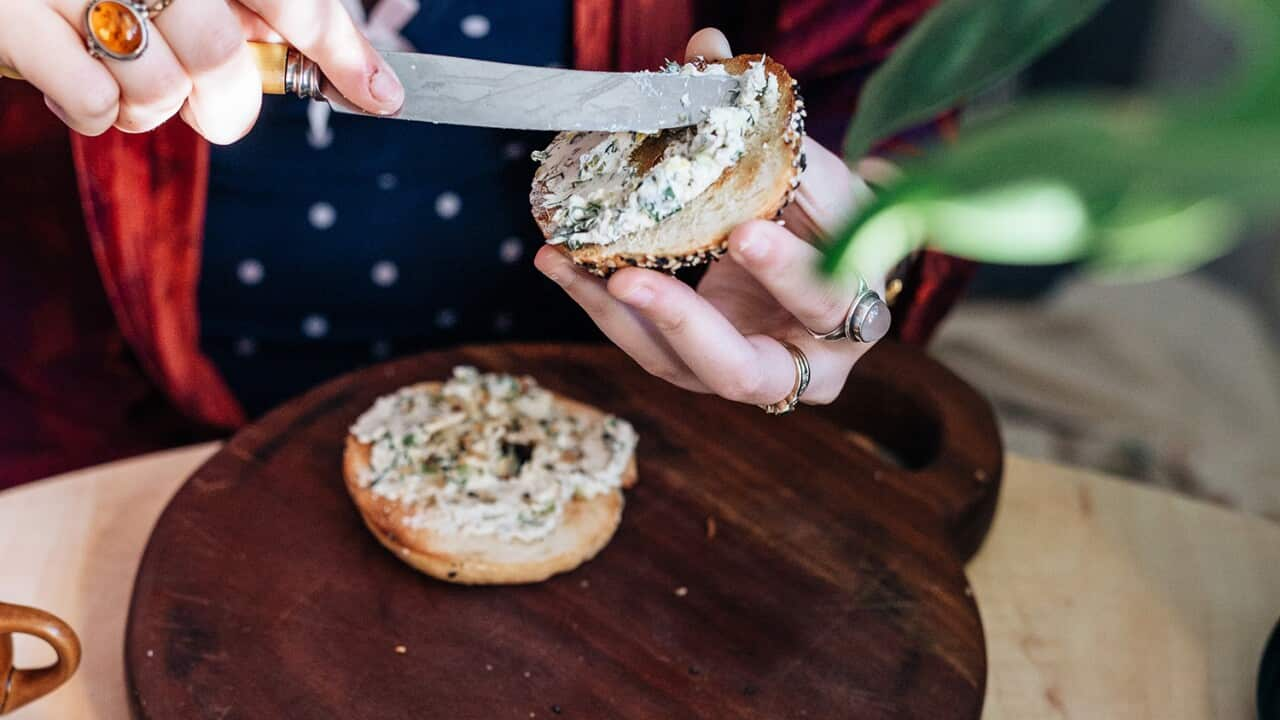"New Yorkers consider a good bagel their birthright," says Michael Shafran of in Sydney.
So, when he arrived in Australia, he was shocked to discover that what passed as a bagel was just "a roll with a hole".
"Australia is a fairly young country when it comes to bagels. People seem to be OK with the fact the bread is round with a hole, but it's lacking a soul."
Shafran wants people to understand that a bagel is a heritage product. "It was only a Polish-Jewish product until the Jews fled Poland and escaped to New York in the 60s and 70s. The original bagels were smaller and harder than the ones they have now."
He explains it's not light food; it should have depth and "chew".
“There are really only two styles of bagels: New York and Montreal. Most Polish-Jewish bakers came to New York, some went to Montreal and London. They're the only places that have a legitimate bagel culture. Here, it's just a product without any knowledge or love."
Shafran claims to have tried every bagel in Sydney and Melbourne and they all made him "sad", so he started Brooklyn Boy Bagels to enjoy the real thing.
But it takes work. "Making a bagel is a complicated, two-day process," he says.
It needs to ferment overnight, boiled and then be baked. The fermentation creates flavour. "A proper bagel has a slightly sour, subtle tang. It's not as pronounced as sourdough, but it's there," he says.
Then you need to boil the bagel; steaming is a no-no.
"Boiling is the first cooking of the bagel, it creates the texture inside and out. If you steam it, it's just whacking the outside of it and doesn't change the inside texture," he says. "Steaming doesn't get the right crust and chew. Steaming versus boiling is like Tip Top versus an artisan sourdough."
Bagels should have a crust, they should put up a little bit of fight before you get to the soft-but-chewy centre.
Then it's time to bake the bagel.
"This cooks it all the way through. That moisture from the boiling evaporates in the oven and creates a really beautiful crust on the outside. Bagels should have a crust, they should put up a little bit of fight before you get to the soft-but-chewy centre."
Daniel Chamravi of in Melbourne says the two most famous Jewish bakeries in town are Glick's and Lichtenstein's Bakehouse, but neither offers New York-style bagels.
"Glick's was founded by [the late] Mendel Glick, a Polish-Jewish man, and he came directly from Poland so [the bagels are] different. They're a bit softer, while the New York-style ones are a bit more dense and chewy," Chamravi says.
"Some of the old school Jewish bakeries have different styles because they came directly from Europe; they developed a different culture and taste in Australia. A lot of new bagel bakeries are importing a style from New York that became popular in North America."
Chamravi thinks there's been a bit of a renaissance of bagels in the last few years, with several bagel varieties, brands and bakeries. "It's giving customers more choice and allowing people to connect to Jewish history and culture."
It's giving customers more choice and allowing people to connect to Jewish history and culture.
Mother-daughter duo Bernadette Sheppard and Anna Berlyn chose the New York route when they opened in Sydney.
They believe bagel schmears and fillings are just as important as the bread itself.
"A bagel that tastes like it's from New York should be lovely and soft on the inside and crunchy on the outside, so when you bite through you get the different layers from the filling in one perfect, seamless bite," Sheppard says.
"Even how you lay schmear is important, it needs to be on each side of the bagel so you have consistency from the top and bottom layer. You're not just putting a sandwich together; there's a technique to layering it."
The two most New York of fillings are smoked salmon, or lox, and pastrami. Berlyn believes it's the little details that matter.
"The capers are crushed a certain way so they melt in with the silky lox, otherwise you just get a bite of capers. We make our pickles and the Russian dressing," she says.
"It's all these little one percenters that make the bagels right."
Photographs by George St Deli.




